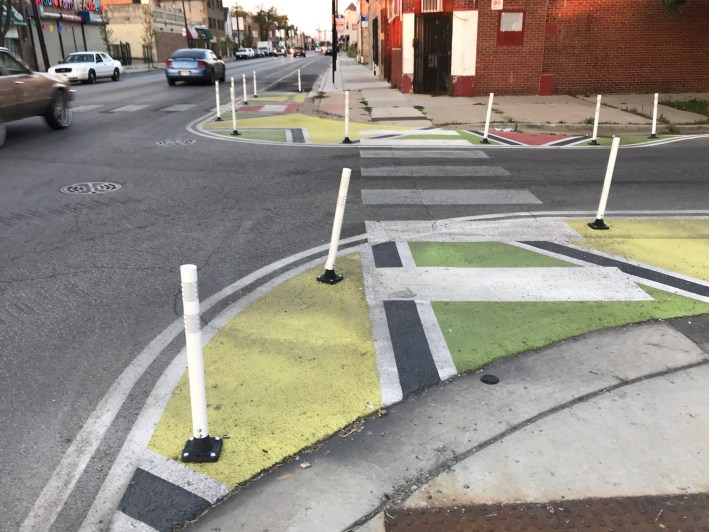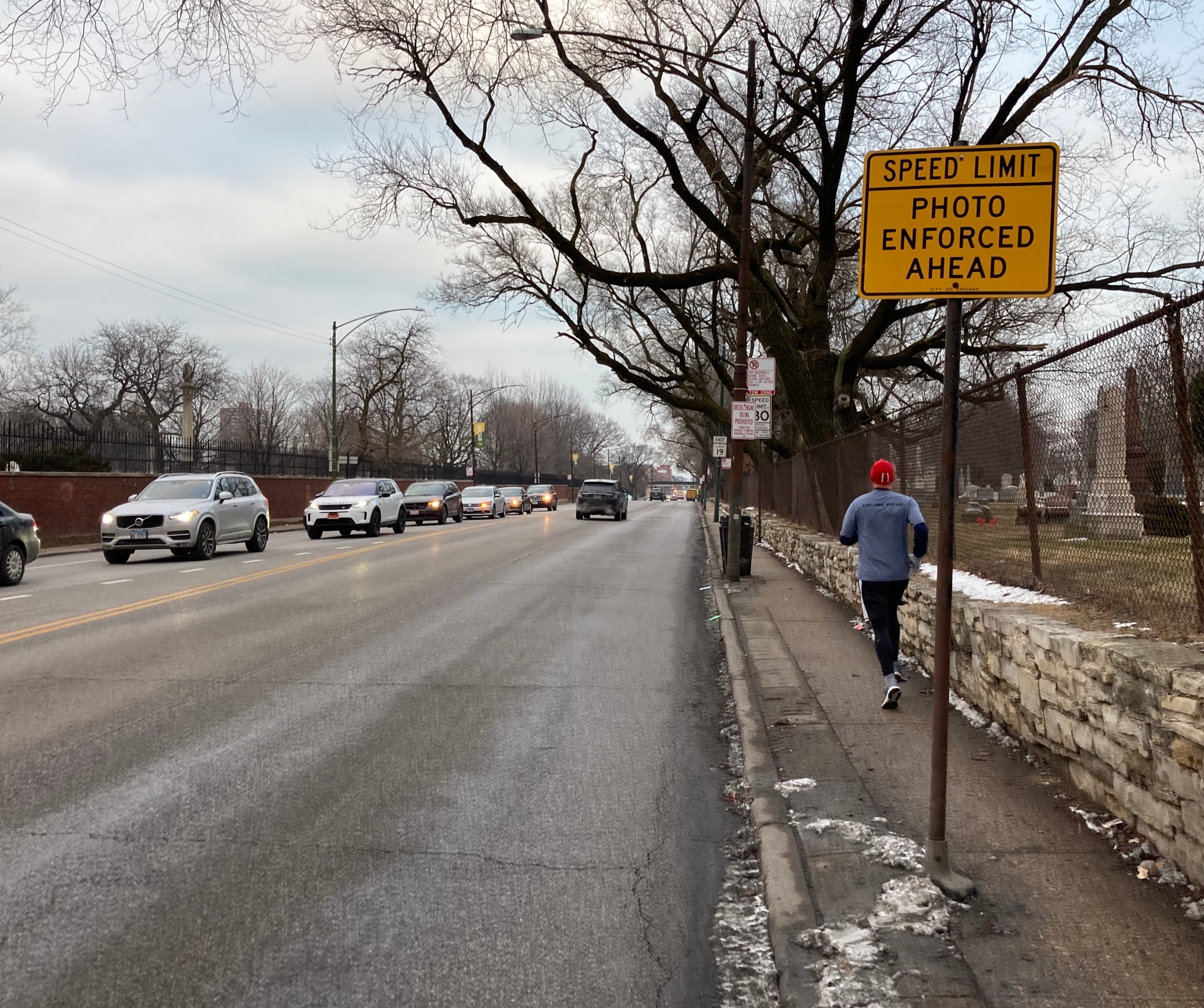Yesterday the Chicago Department of Transportation announced that it's expanding its Vision Zero crash prevention program, which has so far involved outreach and infrastructure projects in the West Side communities of East and West Garfield Park, North Lawndale and Austin, to include other communities on the South, West, and Northwest sides this spring. The department also gave warning that on Monday, March 1, the city's speed cameras will begin issuing $35 tickets for drivers going 6-9 mph over the speed limit.
The South Side Vision Zero initiative will include Englewood, West Englewood, Grand Boulevard and Washington Park. The West and Northwest side program includes Belmont-Cragin, Humboldt Park, and West Town. CDOT noted that Vision Zero is expanding in conjunction with the city earmarking $49 million for active transportation infrastructure and outreach over two years in the city’s five-year capital improvement plan. This includes $10 million for Vision Zero and pedestrian safety treatments like pedestrian islands and sidewalk extensions; $17 million for bikeways; and $10 million for upgrades to the areas around bus stop and train stations that will make it safer and more convenient to access transit.
"Investing in traffic safety makes our communities safer, more equitable, and more accessible – and puts more opportunities within reach of residents in every neighborhood,” said CDOT chief Gia Biagi in a statement. “Collaborating with neighborhood residents helps produce safer streets that also reflect local knowledge and needs."
Traffic deaths on Chicago streets were up 45 percent last year, from from 96 in 2019, to 139 in 2020. The rise in fatalities can be attributed in part to the documented increase in speeding in our city during COVID-19, when fewer people have been driving and the roads are less congested. This is part of a nationwide trend during the pandemic.

CDOT noted that Vision Zero initiatives include various strategies to prevent serious and fatal crashes; including lowering speed limits, road diets to convert excess travel lanes to other uses like wider sidewalks and bike lanes; and "rapid delivery" projects that use materials like paint and plastic posts to improve conditions for walking and biking cheaply and quickly. The department says last year it put in pedestrian safety infrastructure at over 250 intersections.
The 2019 Vision Zero West Side Plan led to pedestrian safety improvements on major roadways like Madison Street, 16th Street and Ogden Avenue; and plans for a reconfiguration of the hazardous “Five Corners” intersection of Ogden, Pulaski and Cermak. (A CDOT spokesperson didn't know offhand whether any action has been taken on the Five Corners makeover yet.)

Last but not least in the city's toolbox of strategies to prevent serious and fatal crashes is automated enforcement cameras. In November the City Council passed Mayor Lori Lightfoot's plan to lower the threshold for speed cam tickets from the current 10 mph to 6 mph.
While this measure was sold as strategy to address the recent spike in traffic fatalities, Streetsblog Chicago didn't endorse the move. Our rationale was that the pandemic, when many people are already financially struggling, isn’t a good time to start issuing citations for relatively minor offenses. Moreover, the move was such a transparent effort to find revenue to plug Chicago’s budget hole that we feared it would inspire a new backlash against automated enforcement, when there have already been serious efforts to ban the technology in Illinois.
Far South Side alderman Anthony Beale (9th) told the Sun-Times he opposes the change for similar reasons, and warned that there will be a backlash. "We’re still in a pandemic. People are not working. Crime is up. Restaurants are closing. Hotels are closing. And we’re gonna continue to set people back by ticketing them more. That is the wrong approach.”
But since the change is happening, hopefully it will have a positive effect on safety. Relatively minor changes in speed can make a big differences in crash outcomes. Studies show that while pedestrians struck at 20 mph almost always survive, and those struck at 30 mph have a roughly 50/50 chance of survival, those struck at 40 mph almost always die.
CDOT announced in late January that Chicago's speed cameras would start issuing warnings for 6-9 mph violations, with $35 tickets being issued for violations starting in March. The existing penalty is $35 for going exactly 10 mph over the limits, and then $100 for exceeding the limit by 11 mph and above, which will still be the case.
By state law, Chicago's speed cameras can only be installed within Child Safety Zones, located within 1/8 mile of schools and parks. The law also dictates that cameras near schools can only issue tickets during school hours when children are present, and cams near parks are only in effect during park hours.





